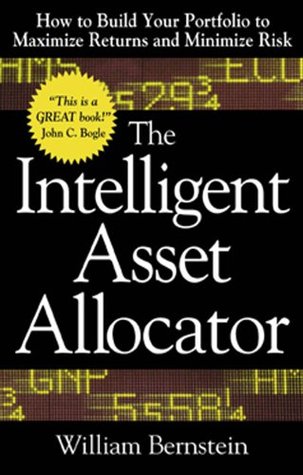More on this book
Kindle Notes & Highlights
Read between
December 19 - December 31, 2018
If you don’t like investing all that much, and if reading this book is the equivalent of root canal work, then these are the only four assets you really need.
growth and value.
three dimensions of stock characterization—nationality, size, and value versus-growth-orientation.
tracking error does not mean lower returns,
it is quite possible that over the next few decades stock returns may actually be less than bond returns.
the aggressiveness of your portfolio is reflected in your overall stock and bond mix, not in the kinds of equity you hold, which should be similar at all levels of risk.
There are two kinds of investors, be they large or small: those who don’t know where the market is headed, and those who don’t know that they don’t know.
This highlights a human foible that has great import in finance—our tendency to see patterns where there are in fact none.
there is no such thing as stock-picking skill.
no evidence of persistence of fund performance.
In fact, with the particularly perverse logic of fund flows, very few investors actually obtain the spectacular early returns of the “top” funds.
large asset inflows tend to depress future returns because of so-called market impact costs,
Math Details: How to Statistically Test for Skill
“impact-cost drag”
the really bad news is that actively managed funds are so expensive.
fund’s expense ratio (ER),
There are actually three more layers of expenses beyond the ER, which merely comprises the fund’s advisory fees (what the managers get paid) and administrative expenses. The next layer of fees are the commissions paid on transactions.
The second extra layer is the bid-ask spread of stocks bought and sold.
The last layer of extra expense—so-called market-impact costs—is the most difficult to estimate.
Impact costs are not a problem for small investors buying shares of individual companies,
The Four Layers of Mutual Fund Costs Expense ratio Commissions Bid-ask spread Market-impact costs
universal availability of financial information is in fact the reason behind the failure of security analysis.
for most amateur participants winning or losing was less a matter of skill than simply playing conservatively and avoiding mistakes.
“The Loser’s Game,”
too does the investor who simply buys and holds a widely diversified stock portfolio.
success is less a matter of winning than avoiding losing.
incur high costs
The ultimate loss-avoidance strategy, then, is to simply buy and hold the entire...
This highlight has been truncated due to consecutive passage length restrictions.
constantly analyzing and adjusting your portfolio results in high expenses and ...
This highlight has been truncated due to consecutive passage length restrictions.
The basic thing to remember about research expense is that it results in turnover, which in turn increases total expense through commissions, spreads, and impact costs.
The guts of the program are monthly returns for 11,000 or so mutual funds, and more importantly, benchmark indexes.
For starters, it is important to realize that we have to be careful just how we benchmark and compare our actively managed funds.
There is a direct relationship between how well indexing works in a particular asset category and how well that asset category is doing compared to other asset classes.
An index fund takes the full brunt of an asset class’s excellent or poor performance relative to other asset classes.
So, to summarize, because of the dominance of large-company stock returns over the past 15 years, large-cap indexing looks better than it actually is, and small-cap indexing looks worse than it actually is.
This is not due to any lack of efficacy of indexing in these areas but rather to an artifact of the poor performance of the asset classes themselves.
the biggest theoretical advantage of indexing should be in the emerging-markets area.
small-cap growth stocks have poor long-term returns, and it is probably wise to avoid investing in this area, active or indexed.
In other words, the very worst funds in the group got killed off (or more likely, merged with other funds), so you are looking at an overly optimistic picture of overall fund performance.
First, because of their higher turnover, actively managed funds have higher distributions of capital gains, which are taxed at your capital gains rate at both the federal and state level. An index fund allows your capital gains to grow largely undisturbed until you sell.
Small-cap index funds (both foreign and domestic) tend to have higher turnovers than large foreign and domestic index funds.
how can the markets be efficient when the experts lose with such depressing regularity?
it’s futile to analyze the prospects for an individual stock (or the entire market) on the basis of publicly available information, since that information has already been accounted for in the price of the stock (or market).
In fact, a very good argument can be made that the market more often than not overreacts to events, falling too much on bad news and rising too much on good news.
you are better off buying and holding a random selection,
an index of stocks rather than attempting to ana...
This highlight has been truncated due to consecutive passage length restrictions.
Ben Graham’s The Intelligent Investor.


